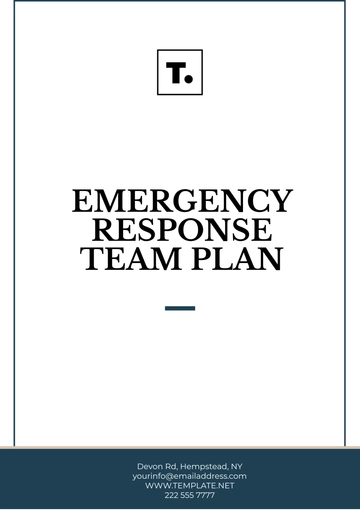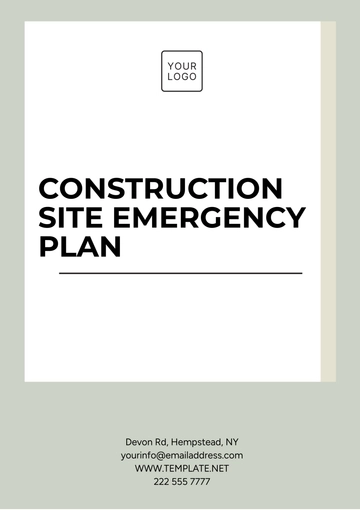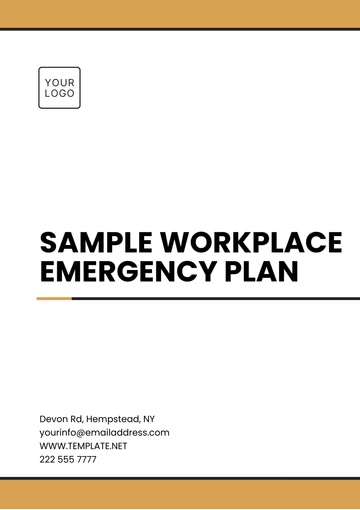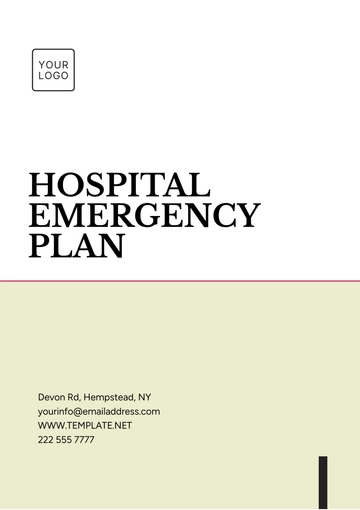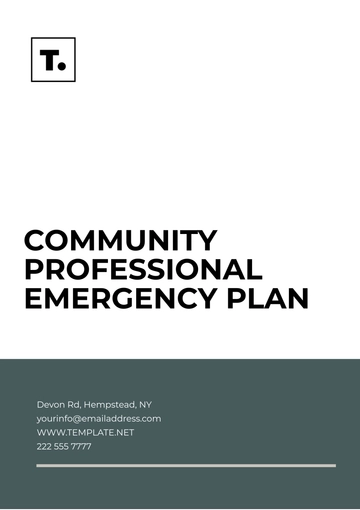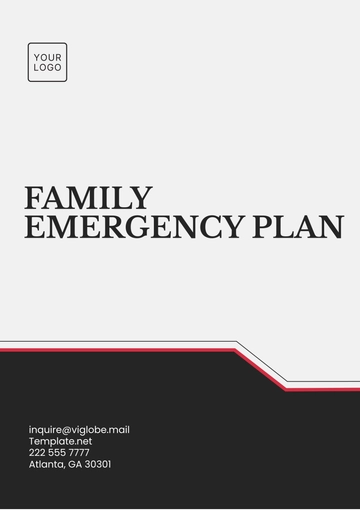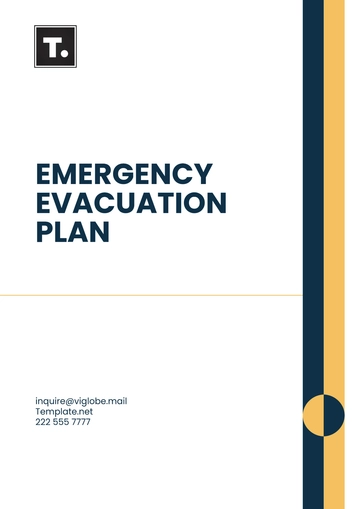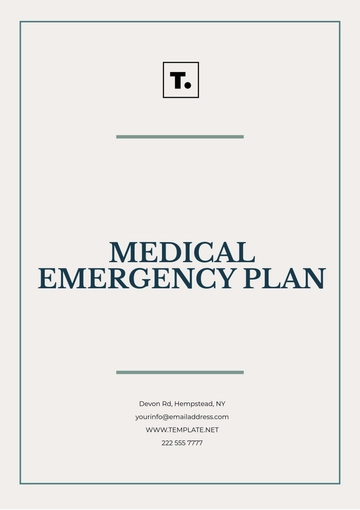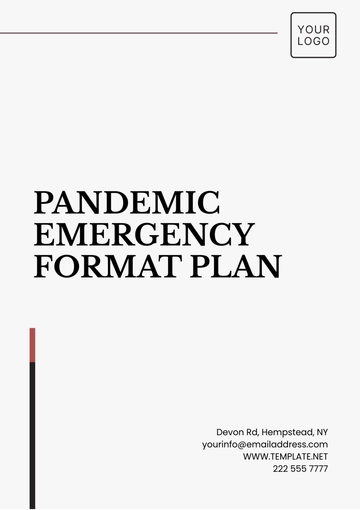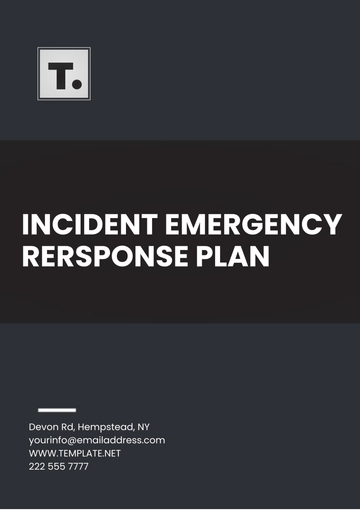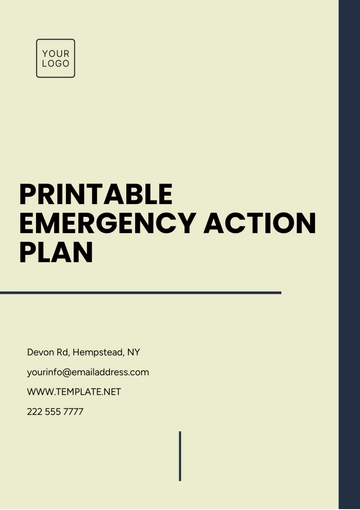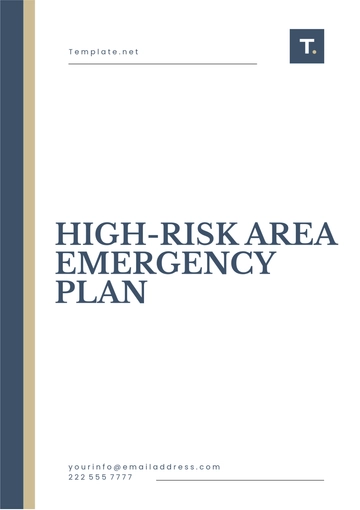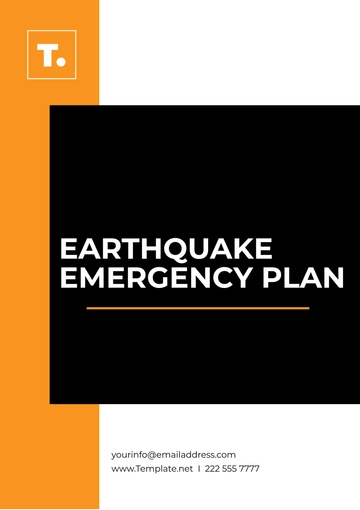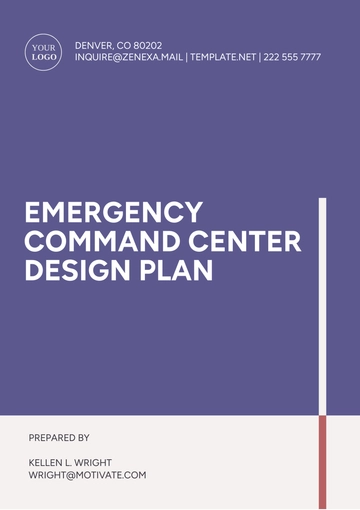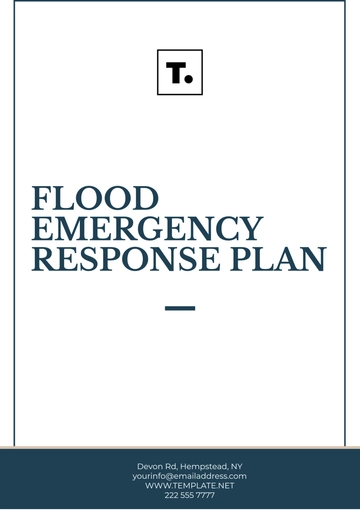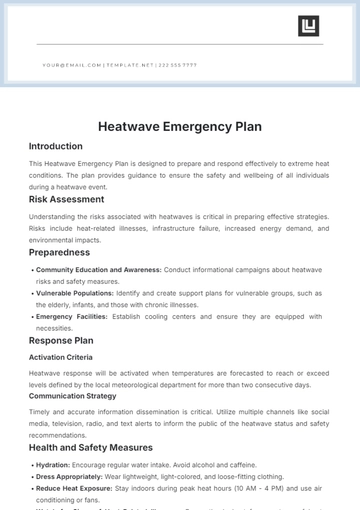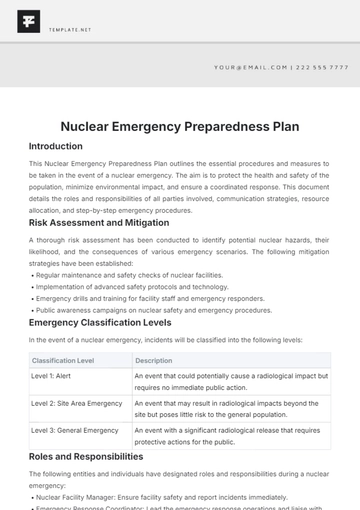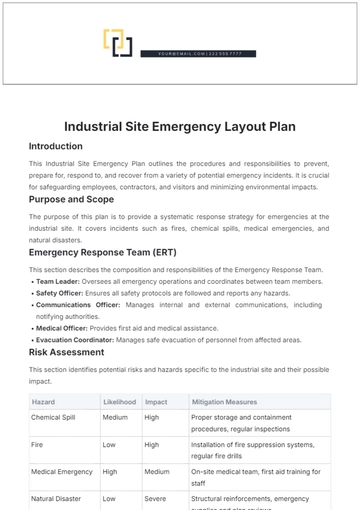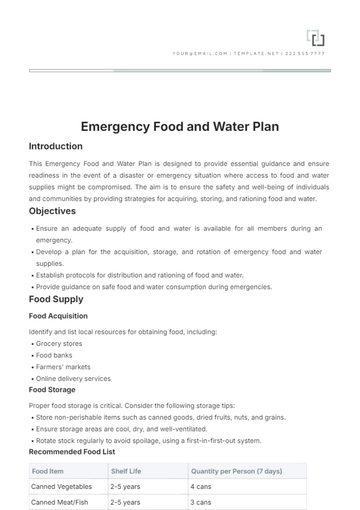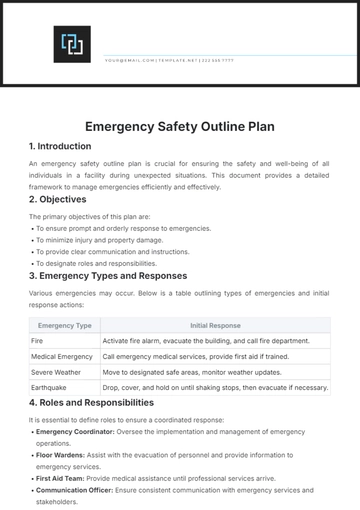Free Emergency Care Plan
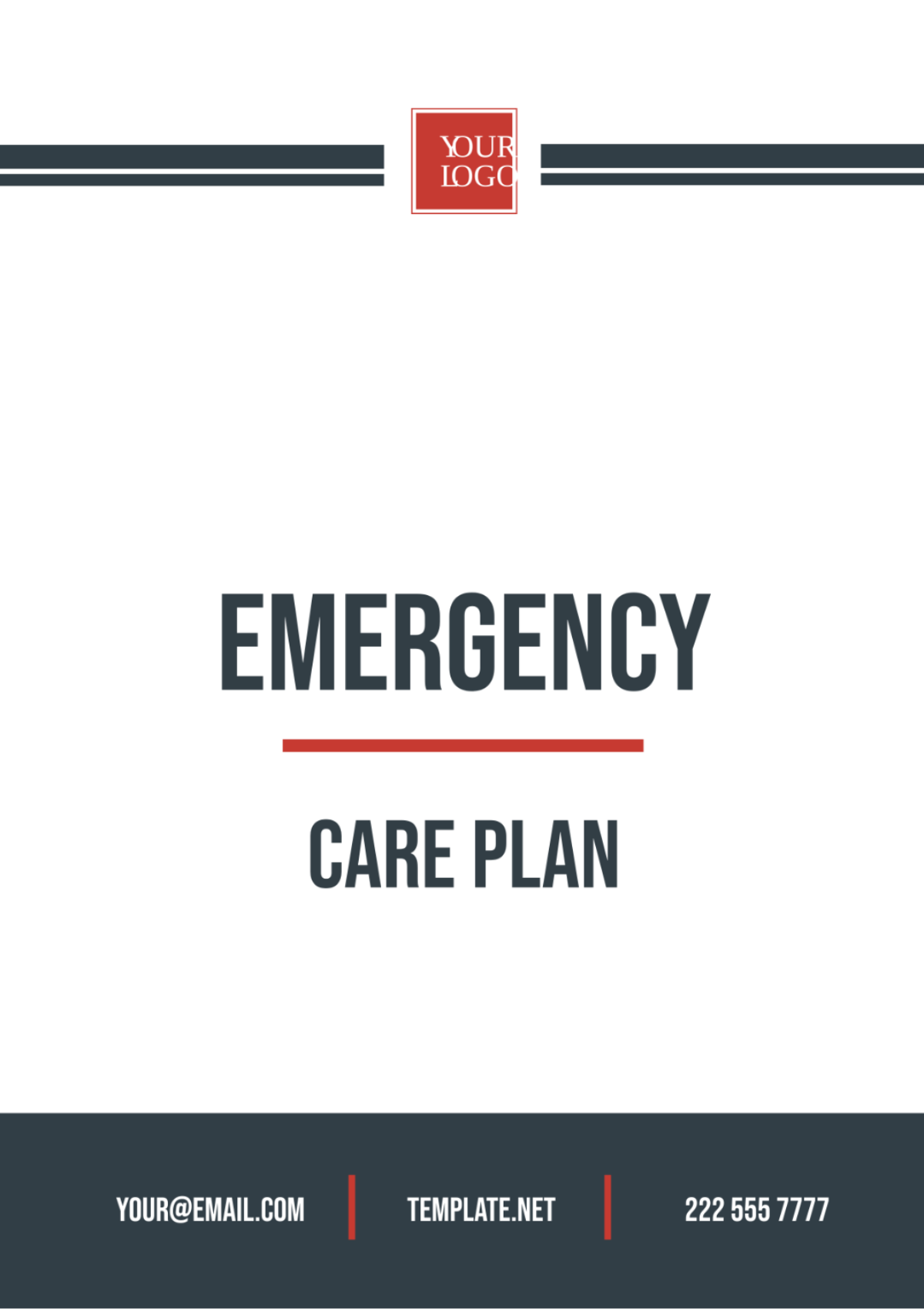
Written by: [Your Name]
I. Introduction
This Emergency Care Plan has been created to outline procedures and protocols to follow in case of emergencies, ensuring prompt and effective response to mitigate risks and minimize harm.
II. Contact Information
Contact Person | Role | Phone |
[Your Name] | Leading Care Coordinator | [Your Company Number] |
Jane Doe | Assistant Coordinator | 555-123-4567 |
III. Emergency Procedures
A. Types of Emergencies
1. Medical Emergency
Signs and symptoms indicating a medical emergency include chest pain, difficulty breathing, and loss of consciousness.
2. Natural Disaster
In the event of a natural disaster such as an earthquake, take cover under sturdy furniture and away from windows. After the shaking stops, evacuate to an open area away from buildings and other structures.
3. Fire Emergency
In case of a fire emergency, activate the nearest fire alarm, evacuate the building using the nearest exit, and assemble at the designated assembly point outside the building.
B. Steps to Take
1. Assess the Situation
Assess the nature and severity of the emergency, ensuring personal safety before proceeding with any actions.
2. Call for Help
Dial 911 or emergency services and provide detailed information about the emergency, location, and any injuries.
3. Provide First Aid
Administer basic first aid such as CPR, stopping bleeding, or treating shock until professional help arrives.
IV. Safety Protocols
The following safety protocols should be strictly followed:
Maintain clear exit routes at all times.
Regularly check and maintain emergency equipment (fire extinguishers, first aid kits).
Conduct regular emergency drills for all employees.
Ensure everyone is informed about the location of emergency exits and assembly points.
V. Emergency Supplies
A. First Aid Kit
Contents include bandages, antiseptic wipes, gauze pads, adhesive tape, scissors, and gloves. Located in the main office and break room.
B. Emergency Equipment
Emergency equipment includes fire extinguishers, smoke detectors, and emergency lighting. Located throughout the building.
VI. Evacuation Plan
A. Evacuation Routes
Evacuation routes are marked with illuminated exit signs and lead to assembly points in the parking lot.
B. Special Considerations
Designated personnel will assist individuals with mobility issues or special needs during evacuation.
VII. Communication Plan
A. Internal Communication
Use the intercom system to communicate with staff members during emergencies. Designate specific individuals to relay information.
B. External Communication
Contact emergency services and provide updates as necessary. Notify key stakeholders and family members of the situation.
VIII. Training and Drills
Regular training and drills are crucial to ensure everyone knows how to respond in an emergency. The following schedule outlines the training and drills plan:
Quarterly fire drills and evacuation exercises.
Bi-annual first aid training sessions.
Annual comprehensive emergency response training.
IX. Review and Updates
This Emergency Care Plan should be reviewed and updated regularly to ensure its effectiveness. It is recommended to review this plan every six months and after any emergency event.
- 100% Customizable, free editor
- Access 1 Million+ Templates, photo’s & graphics
- Download or share as a template
- Click and replace photos, graphics, text, backgrounds
- Resize, crop, AI write & more
- Access advanced editor
Prepare for unforeseen circumstances with our editable Emergency Care Plan template from Template.net. Customizable to fit various scenarios, it's editable in our Ai Editor Tool for quick adjustments. Ensure readiness for emergencies with a well-crafted plan.
You may also like
- Finance Plan
- Construction Plan
- Sales Plan
- Development Plan
- Career Plan
- Budget Plan
- HR Plan
- Education Plan
- Transition Plan
- Work Plan
- Training Plan
- Communication Plan
- Operation Plan
- Health And Safety Plan
- Strategy Plan
- Professional Development Plan
- Advertising Plan
- Risk Management Plan
- Restaurant Plan
- School Plan
- Nursing Home Patient Care Plan
- Nursing Care Plan
- Plan Event
- Startup Plan
- Social Media Plan
- Staffing Plan
- Annual Plan
- Content Plan
- Payment Plan
- Implementation Plan
- Hotel Plan
- Workout Plan
- Accounting Plan
- Campaign Plan
- Essay Plan
- 30 60 90 Day Plan
- Research Plan
- Recruitment Plan
- 90 Day Plan
- Quarterly Plan
- Emergency Plan
- 5 Year Plan
- Gym Plan
- Personal Plan
- IT and Software Plan
- Treatment Plan
- Real Estate Plan
- Law Firm Plan
- Healthcare Plan
- Improvement Plan
- Media Plan
- 5 Year Business Plan
- Learning Plan
- Marketing Campaign Plan
- Travel Agency Plan
- Cleaning Services Plan
- Interior Design Plan
- Performance Plan
- PR Plan
- Birth Plan
- Life Plan
- SEO Plan
- Disaster Recovery Plan
- Continuity Plan
- Launch Plan
- Legal Plan
- Behavior Plan
- Performance Improvement Plan
- Salon Plan
- Security Plan
- Security Management Plan
- Employee Development Plan
- Quality Plan
- Service Improvement Plan
- Growth Plan
- Incident Response Plan
- Basketball Plan
- Emergency Action Plan
- Product Launch Plan
- Spa Plan
- Employee Training Plan
- Data Analysis Plan
- Employee Action Plan
- Territory Plan
- Audit Plan
- Classroom Plan
- Activity Plan
- Parenting Plan
- Care Plan
- Project Execution Plan
- Exercise Plan
- Internship Plan
- Software Development Plan
- Continuous Improvement Plan
- Leave Plan
- 90 Day Sales Plan
- Advertising Agency Plan
- Employee Transition Plan
- Smart Action Plan
- Workplace Safety Plan
- Behavior Change Plan
- Contingency Plan
- Continuity of Operations Plan
- Health Plan
- Quality Control Plan
- Self Plan
- Sports Development Plan
- Change Management Plan
- Ecommerce Plan
- Personal Financial Plan
- Process Improvement Plan
- 30-60-90 Day Sales Plan
- Crisis Management Plan
- Engagement Plan
- Execution Plan
- Pandemic Plan
- Quality Assurance Plan
- Service Continuity Plan
- Agile Project Plan
- Fundraising Plan
- Job Transition Plan
- Asset Maintenance Plan
- Maintenance Plan
- Software Test Plan
- Staff Training and Development Plan
- 3 Year Plan
- Brand Activation Plan
- Release Plan
- Resource Plan
- Risk Mitigation Plan
- Teacher Plan
- 30 60 90 Day Plan for New Manager
- Food Safety Plan
- Food Truck Plan
- Hiring Plan
- Quality Management Plan
- Wellness Plan
- Behavior Intervention Plan
- Bonus Plan
- Investment Plan
- Maternity Leave Plan
- Pandemic Response Plan
- Succession Planning
- Coaching Plan
- Configuration Management Plan
- Remote Work Plan
- Self Care Plan
- Teaching Plan
- 100-Day Plan
- HACCP Plan
- Student Plan
- Sustainability Plan
- 30 60 90 Day Plan for Interview
- Access Plan
- Site Specific Safety Plan

